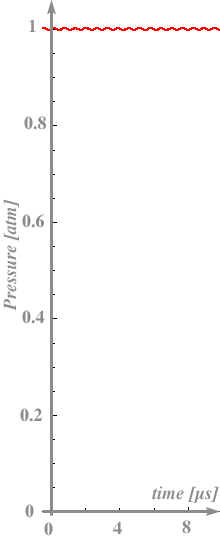

A real pressure wave is only a small fraction of the total pressure and would look more like the plot on the left. Your ears are capable of hearing incredibly small pressure fluctuations, for example the threshold of hearing is 10-10 atmospheres, and loud sound like a rock band is 10-4 atmospheres (rms deviation.) What is plotted here would correspond to the sound intensity you would get by standing very close to a jet engine. Any bigger pressure fluctuations than the ones plotted here, and your ear drums will not survive!
Each individual molecule is flying around as usual in kinetic theory, but superimposed on this is a sine wave such that if we looked at the rms velocity in the longitudinal direction we would see a sinusoidal variation. It is simple harmonic motion with an elastic restoring force due to the pressure variation.
High density regions are called condensations or compressions, and low pressure regions rarefactions.
Semantics:
Sound can be transmitted in any elastic medium, solid, liquid or gas.
If it is a longitudinal compression wave, it is sound - even if
nobody can hear it. The range of frequencies of sound is a few Hz up
to a few GHz (109 s-1).
© MultiMedia Physics, 1999/2000